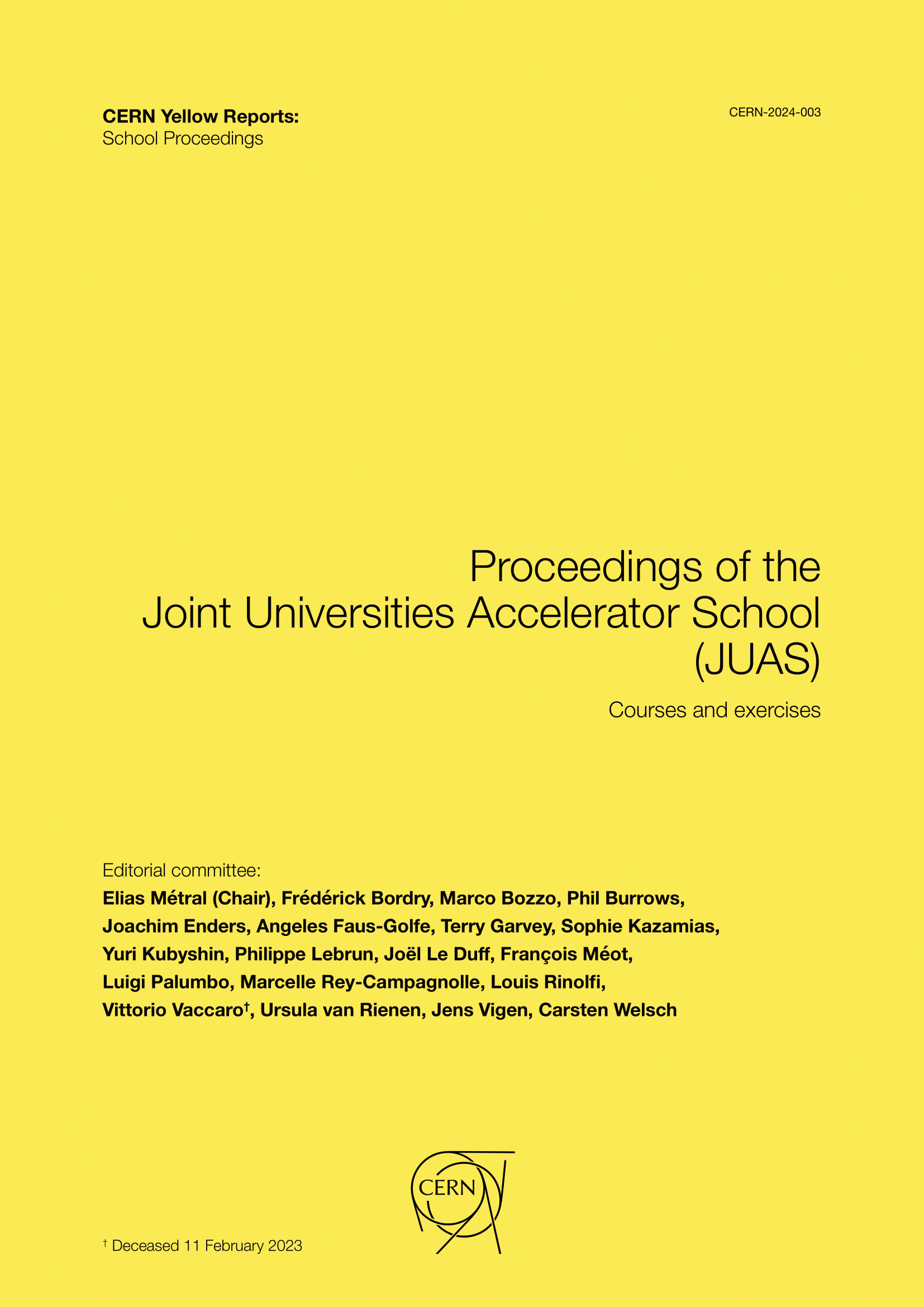III.13 — CERN LIU project: beam dynamics aspects and solutions
DOI:
https://doi.org/10.23730/CYRSP-2024-003.2141Abstract
The goal of the LHC Injectors Upgrade (LIU) project was to increase the intensity and brightness in the LHC injectors in order to match the challenging requirements of the High-Luminosity LHC (HL-LHC) project, while ensuring high availability and reliable operation of the injectors complex throughout the whole HL-LHC era. Fulfilling this goal required identifying the main performance limitations across all LHC injectors (Linac2, the Proton Synchrotron Booster (PSB), the Proton Synchrotron (PS), the Super Proton Synchrotron (SPS)) and then implementing a combination of extensive hardware modifications and new beam dynamics solutions in order to overcome them. The beam dynamics solutions were studied, tested and, where possible, implemented operationally already during the LHC Run 2 (2014–2018). The great majority of the LIU hardware modifications were implemented during the 2019–2020 CERN accelerators shutdown. This chapter describes the rationale behind the main baseline choices of the LIU project and the evolution of the various project phases, before concluding on the expected beam parameter reach and actual commissioning. It will solely address the upgrade of the proton injector chain, which better matches the pedagogical scope of this contribution.
Downloads
Published
Issue
Section
License

This work is licensed under a Creative Commons Attribution 4.0 International License.
Authors who publish with this publication agree to the following terms:
- CERN retains copyright and publishes the work licensed under the Creative Commons Attribution License 4.0 that allows others to share the work with an acknowledgement of the work's authorship and initial publication in this series.
- Authors are able to enter into separate, additional contractual arrangements for distribution of the published version of the work (e.g., post it to an institutional repository or publish it in a book), with an acknowledgement of its initial publication in this series.
- Authors are permitted and encouraged to post their work online (e.g., in institutional repositories or on their website) prior to and during the submission process, as it can lead to productive exchanges, as well as earlier and greater citation of published work (See The Effect of Open Access).

